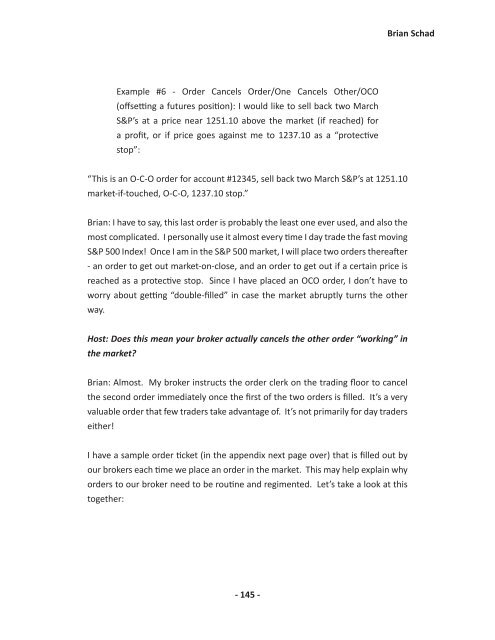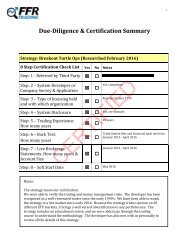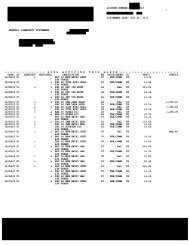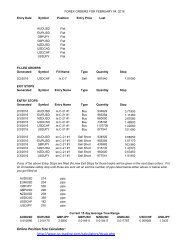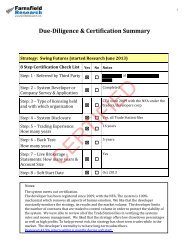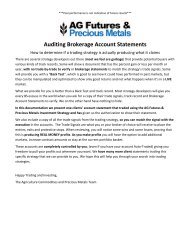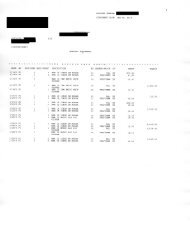The 3Dimensional Trading Breakthrough
You also want an ePaper? Increase the reach of your titles
YUMPU automatically turns print PDFs into web optimized ePapers that Google loves.
Brian Schad<br />
Example #6 - Order Cancels Order/One Cancels Other/OCO<br />
(offsetting a futures position): I would like to sell back two March<br />
S&P’s at a price near 1251.10 above the market (if reached) for<br />
a profit, or if price goes against me to 1237.10 as a “protective<br />
stop”:<br />
“This is an O-C-O order for account #12345, sell back two March S&P’s at 1251.10<br />
market-if-touched, O-C-O, 1237.10 stop.”<br />
Brian: I have to say, this last order is probably the least one ever used, and also the<br />
most complicated. I personally use it almost every time I day trade the fast moving<br />
S&P 500 Index! Once I am in the S&P 500 market, I will place two orders thereafter<br />
- an order to get out market-on-close, and an order to get out if a certain price is<br />
reached as a protective stop. Since I have placed an OCO order, I don’t have to<br />
worry about getting “double-filled” in case the market abruptly turns the other<br />
way.<br />
Host: Does this mean your broker actually cancels the other order “working” in<br />
the market?<br />
Brian: Almost. My broker instructs the order clerk on the trading floor to cancel<br />
the second order immediately once the first of the two orders is filled. It’s a very<br />
valuable order that few traders take advantage of. It’s not primarily for day traders<br />
either!<br />
I have a sample order ticket (in the appendix next page over) that is filled out by<br />
our brokers each time we place an order in the market. This may help explain why<br />
orders to our broker need to be routine and regimented. Let’s take a look at this<br />
together:<br />
- 145 -


